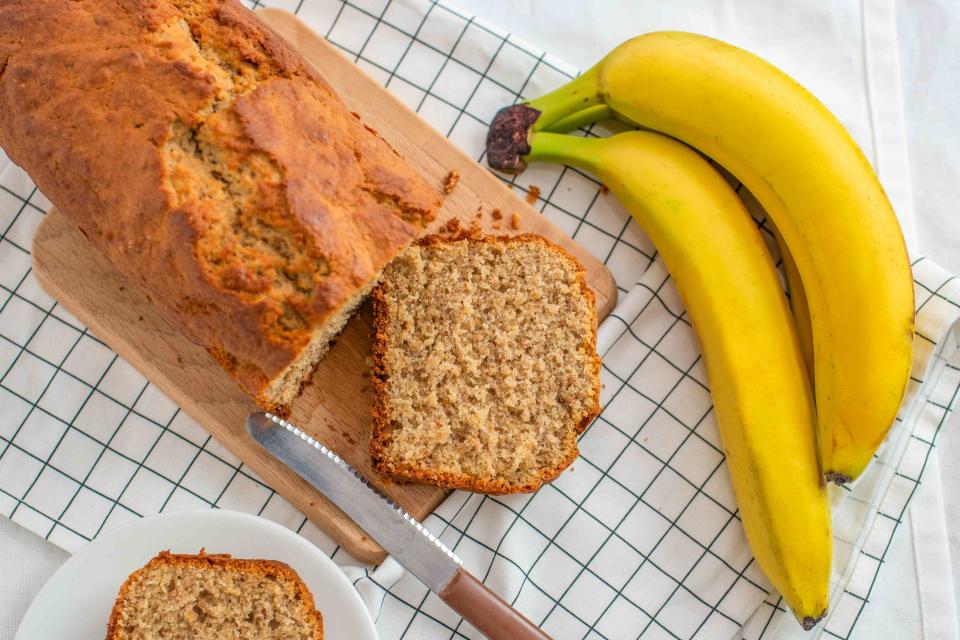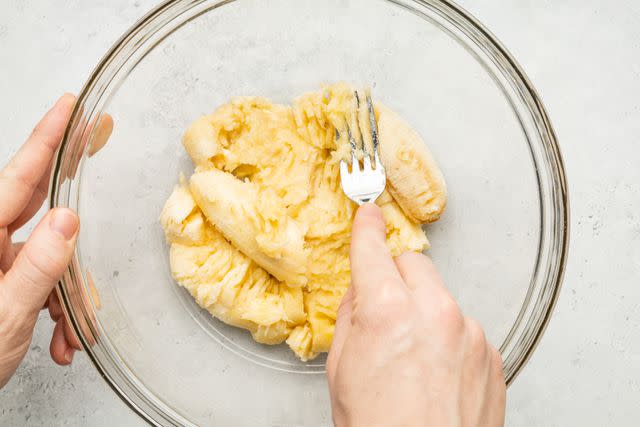The 30-Minute Trick for Ripening Bananas, According to a Pro Baker
- Oops!Something went wrong.Please try again later.
From pastry wiz Stella Parks.

Simply Recipes / Adobe Stock
Easy to make and super delicious, banana bread is one of my favorite quick breads and my preferred way to salvage overripe bananas from the compost bin. As a fruit lover, bananas rarely ripen fully in my kitchen, especially in the wintertime when I don't have access to my favorite berries and stone fruits to enjoy.
So, what do I do when a banana bread craving hits, but my bunch is fresh from the store and still green at the stem?
I’ve tried the oven method—placing unripe bananas in the oven where the peel darkens and the fruit softens—but the sweetness and banana flavor are barely heightened. Those bananas are not ideal for baking. This leaves me with the better but more time-consuming option: moving my bunch to a paper bag, folding the top over, and letting the fruit ripen on its own time.
Read More: How to Store and Freeze Banana Bread
It turns out there’s actually a third option, discovered by Serious Eats’ pastry wizard Stella Parks. Parks realized that amylase, the enzyme responsible for converting a banana’s starches into sugars, happens to also be present in raw egg yolks!
After mashing under-ripe bananas with an egg yolk and allowing the mixture to sit for 30 minutes, Parks observed that the bananas had lost a significant amount of starch, indicating that the amylase in the yolk sped up the starch-to-sugar conversion. From grassy and firm to sweet and soft in 30 minutes? It sounded too good to be true, but I decided to give it a shot.

Simply Recipes / Mark Beahm
I tested this method with underripe but not fully green bananas—they were yellow with a bit of green on each end. To avoid wrestling with the fruit using the tines of a fork, I opted to mash my bananas on a cutting board with a potato masher. (I would highly recommend this!)
Once mashed and measured, I transferred the bananas to a bowl and stirred in one raw egg yolk. After 30 minutes of resting, I proceeded with the banana bread recipe. I transferred my batter into a loaf pan, slid it into the oven, and crossed my fingers.
Did I Use an Extra Egg Yolk?
No! The banana bread recipe I used calls for one whole egg. I separated the egg, added the yolk to the mashed bananas, and waited to add the whites afterward, with the remaining ingredients.
The resulting banana bread was tender, sweet, and had a clear banana flavor. I was glad to find that there was no bitterness or gummy texture, which is what I typically get when I'm impatient and use underripe bananas to make banana bread. Additionally, the fruit had completely disappeared into the batter, leaving no stubborn tough bits behind.
Was it the best loaf I'd ever made? No, but that's because the tropical, vanilla-y flavor present in super-ripe bananas cannot be rushed. It can only be achieved when bananas ripen slowly, in their own time. For me, that essence is key in great banana bread, and that's why black-peel overripe bananas are a must. But if you prefer your quick bread to be a bit less sweet and taste of just-ripe banana, or you need banana bread ASAP, try this smart technique.
Read More: The 3 Signs Your Bananas Are Too Ripe to Safely Eat
Read the original article on Simply Recipes.

